Original author: IGNAS, original source: ignasdefi
How we got here, what to do with Bitcoin now, and what the future holds.
They claim NFTs on Bitcoin are impossible.
They say DeFi is impossible on Bitcoin.
As it turns out, they were wrong.
BTCFi is a zero-to-one innovation that I am very excited about (and invested in).
In this post, I want to take my time, explain how we got here, introduce the protocols you can use today, and share some getting started techniques and discuss next steps.
Why bullish BTCFi
Until recently, Ordinals and BRC20 Still doesn't meet all three of my criteria for a thriving ecosystem. This is the framework I use to evaluate ecosystems and tokens.
How do you choose which tokens to invest in? How did you do your research? Are you just looking for alpha on X? With so many coins and narratives to consider, how do you evaluate which coins have the potential to outperform Bitcoin?
Ordinals and BRC20 interest me because of its 1) innovation and 2) strong storytelling capabilities.
However, BRC20 tokens inflated too quickly without any flywheel effect to curb inflation. BRC20 is freely minted in a "fair release" but without any diversity or use case support. Like meme coins. This may dilute user attention and funds entering the ecosystem. This is how the ICO ERC20 boom of 2017-18 ended.
But things have changed since then.
First, the ORDI token has solidified itself as the first meme coin on Bitcoin to be listed on a major exchange.
Second, truly native dApps launched on Bitcoin (not L2) that are somewhat available and have native tokens.
Third, CEXs like OKX and Binance are investing heavily in Inscription by launching their own Inscription services, markets and listing BTCFi assets.
Fourth, airdrops have arrived in Bitcoin, rewarding users for holding specific assets.
Finally, a new fungible token standard will be launched on the Bitcoin halving block to challenge the dominance of BRC20.
Now, BTCFi is a rapidly growing crypto category with a core community that appears to be dominated by non-Western users!
The total market cap of all BRC20s reaches $2.8 billion, which is enough to attract attention, but low enough to obtain 100x in the early stage room for growth.
Additionally, Ordinals inscriptions are a lifeline to Bitcoin security, as $306 million in Bitcoin fees have been paid to miners.
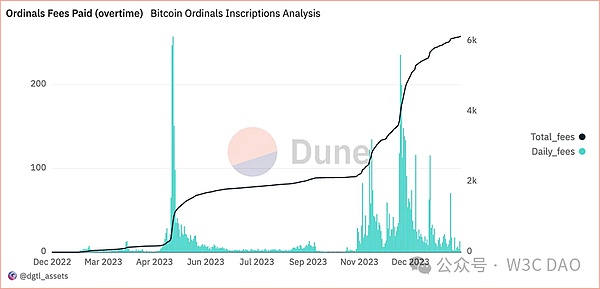
Note the large increase in inscription tx in March and how they will appear again in late 2023.
The sales volume of the top Ordinals NFT series is also very high. "Genesis Cat" by Taproot Wizards sold for $254,000 at Sotheby's auction. The current base price is $13,000. Among the top 20 NFTs with lowest price, 3 are Bitcoin NFTs. Soon many more will join the ranks.
But why would someone pay so much money? Let’s take a brief look back at where it all started.
Here is an important short story.
It started with the Ordinals protocol introduced by Casey Rodarmor in December 2022, which makes every satoshi of Bitcoin (the smallest unit of BTC) portable Unique data, including NFTs.
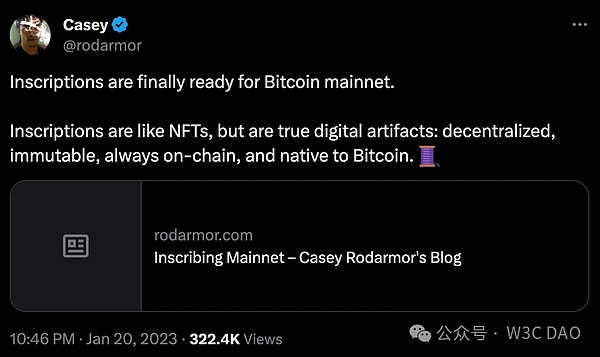
1 Bitcoin = 100 million satoshis.
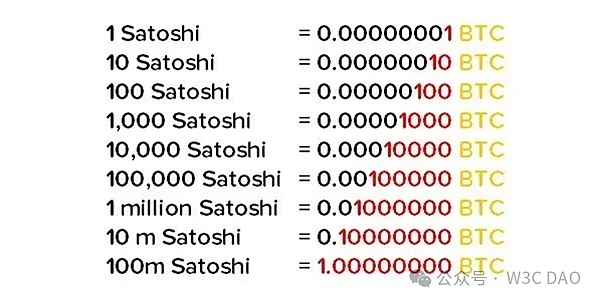
Ordinals NFT is not your Ethereum NFT with a link to off-chain storage. Ordinal JPEG is forever engraved on satoshi. I think Ordinals NFT can be the ultimate choice for exclusive collections and PFPs.

Think about it: a satoshi with an engraved JPEG is probably worth more than its market price. Based on this alone, the entire Bitcoin chain is worth more than the total market cap of Bitcoin. (Same goes for other chains, but makes me sound smart).
However, this innovation was not discovered until March 8, 2023, when an anonymous developer "domo" launched the BRC-20 Token.
BRC-20 token uses JSON data (text-based data format) engraved on satoshi. They are not perfect and are more like tradable NFTs than fungible tokens. For example, you need to "engrave" (via an on-chain transaction on BTC) before you can sell or transfer those tokens.
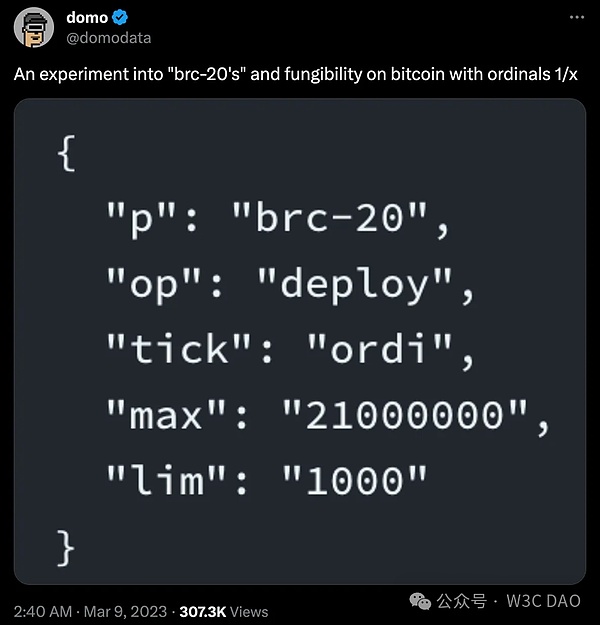
Regardless, the launch of BRC-20 attracted attention and speculation, although Casey criticized the protocol for straying from his original vision and confusing the Ordinals space.
At almost the same time, another anonymous developer, Beny, launched multiple projects to introduce a complex governance model in the Ordinals ecosystem. This was my first attempt at creating a unified ecosystem with the flywheel effect I was looking for.
These include the TRAC token, the Tap protocol, and the Pipe protocol, each of which is interconnected and extends the original concepts of Ordinals and BRC-20.
TRAC Token: Governance token for the ecosystem, including TAP and PIPE protocols.
TAP protocol: supports swap, liquidity pool, airdrop and Bitcoin pledge.
PIPE Protocol: A UTXO-based protocol for tokens and NFTs on Bitcoin, inspired by the RUNES protocol (under development).
To address the limitations of Ordinals, another anonymous developer launched Atomics and ARC20 tokens. Atomics uses Bitcoin’s UTXO model to mint tokens, where 1 token = 1 sat.
Simply put, 1,000 ORDI BRC20 tokens can be engraved on 1 sat. This is why you need to "split" BRC20 tokens onto more sats before you can sell them. But one Atomics ARC-20 is always equal to 1sat.
Casey doesn't seem to like the addition of protocols such as BRC-20, and he proposed Runes, which is based on Bitcoin's UTXO technology (the same as Atomics) The new token protocol aims to integrate a more "orthodox" approach to Bitcoin's token issuance.
The Runes protocol aims to bring more transaction fee revenue, developers and users to Bitcoin while maintaining the integrity of the blockchain.
But Rune’s protocol has not yet been developed, and the community is already speculating about what will happen during the first Bitcoin halving block in April.
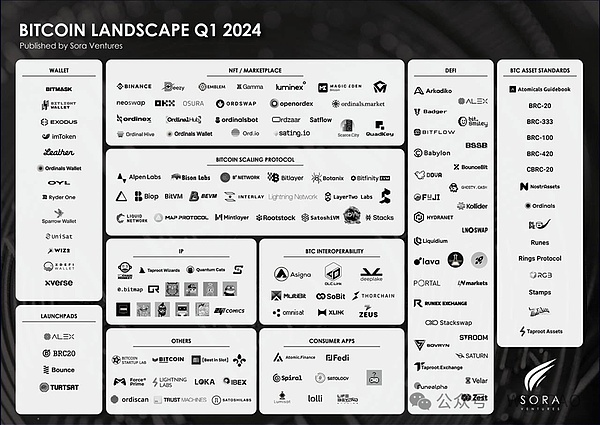
As you can see, the Bitcoin ecosystem is vast and growing with multiple Bitcoin asset standards. Not all DeFi applications mentioned above are truly native Bitcoin dApps.
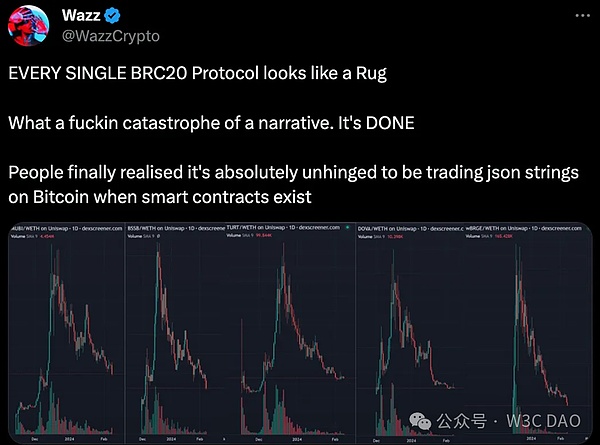
Building on top of Bitcoin requires specific knowledge that only a few protocols enable. In this tweet from Wazz, all the protocols mentioned are ERC20 tokens. As a lot of fake Bitcoins or BTC L2s continue to be launched, they will claim to be on Bitcoin even though they are not.
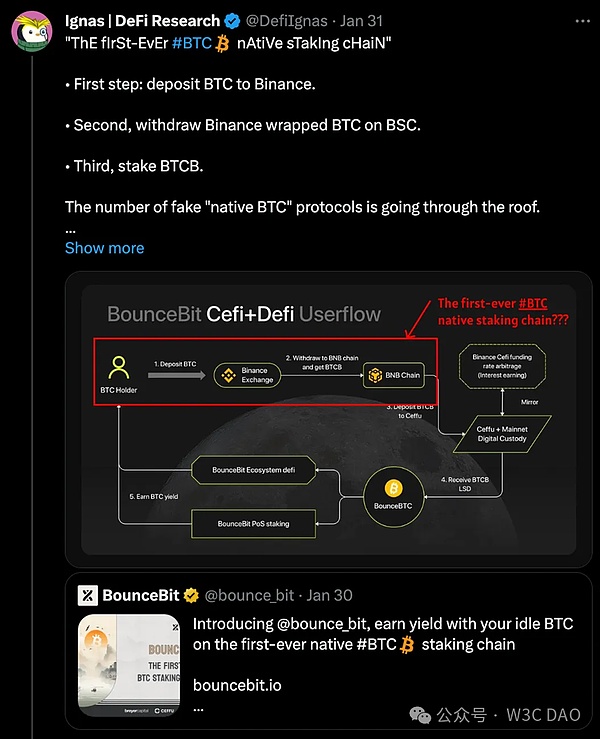
Let's start exploring the world of Bitcoin.
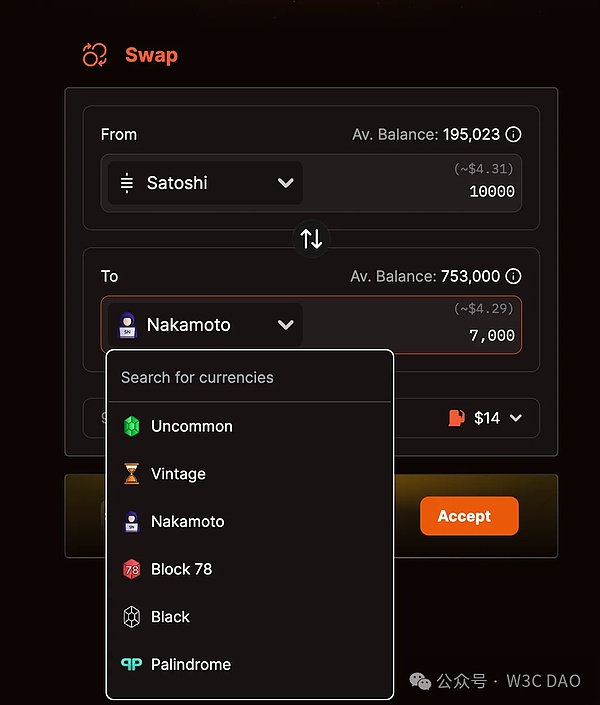
Rare satoshis
Rare satoshis are known for their unique characteristics and historical significance attracting the interest of collectors and classified by rarity.
This obsession is a growing niche of enthusiasts (or degens) keen to obtain sats that have a unique story or value, rather than just monetary value.
Rare or exotic sat:
Myth: The first of the genesis block A sat.
Epic: the first sat of each halving epoch.
Pizza: Since 2010, sat has participated in the famous pizza transaction.
Hitman: sat was involved in Ross Ulbricht's deal to hire a hitman.
Silk Road: On June 27, 2014, the U.S. Marshals seized and auctioned these sats from the Silk Road.
For example, a black rare sat sold for $165,000 (3.9 BTC), becoming the highest price ever paid for a rare sat.
When you read this article, did you feel a strange potential for meme coins?
DEX: Take Ordiswap as an example
It is like Uniswap, but for BRC20 tokens. You can swap, add liquidity and bridge BRC20
As you can see, liquidity is very low ($94k) and trading volume is currently low .
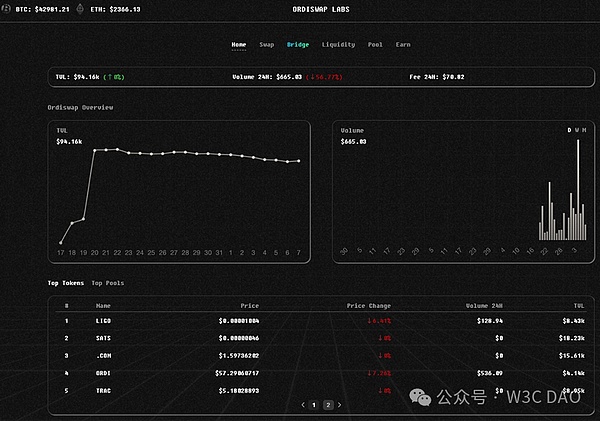
BitSmiley - Bitcoin's MakerDAO
bitSmiley allows minting a type of over-collateralization Stablecoin: bitUSD (based on its bitRC-20 standard), funded by OKX Ventures.
But that's not all. They will also launch:
1.bitLending: Bitcoin’s native peer-to-peer lending protocol.
2. Credit Default Swap (CDS) This requires bundling similar loans and evaluating credit defaults based on default rates.
Liquidium - Ordinal Lending Place
Liquidium is also easy to understand. If you hold expensive Ordinals, you can borrow Bitcoin. Or borrow “expensive” NFTs to short them.
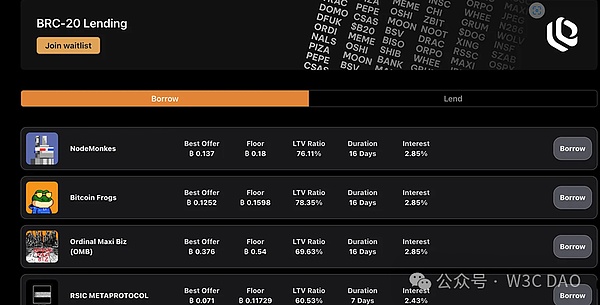
Bitmap and Bitmap Technology - Metaverse and L2
You must be in Magic On Eden, I have even seen the Ordinals below on the Bitcoin browser.
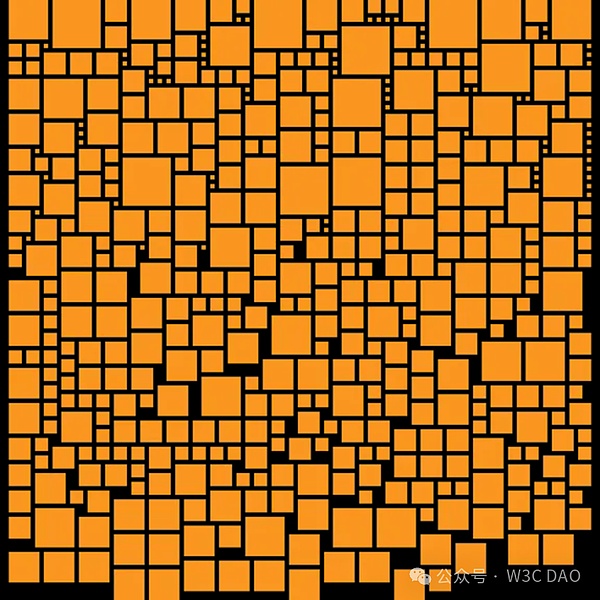
Bitmap converts Bitcoin's blockchain data into spatial land. So, it turns them into a virtual land, much like the sandbox does on Ethereum.
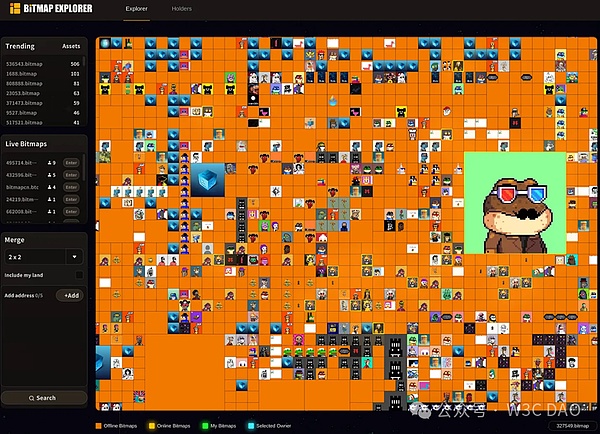
Runes Protocol—Bitcoin’s next big thing
Here In this interview (recommended viewing), Casey (creator of Ordinals theory) said: “Runes attempts to bring speculation, gambling and fun into Bitcoin.” So, fun times are coming.
The protocol will go live on the first Bitcoin halving block sometime in April. But speculation has already begun.
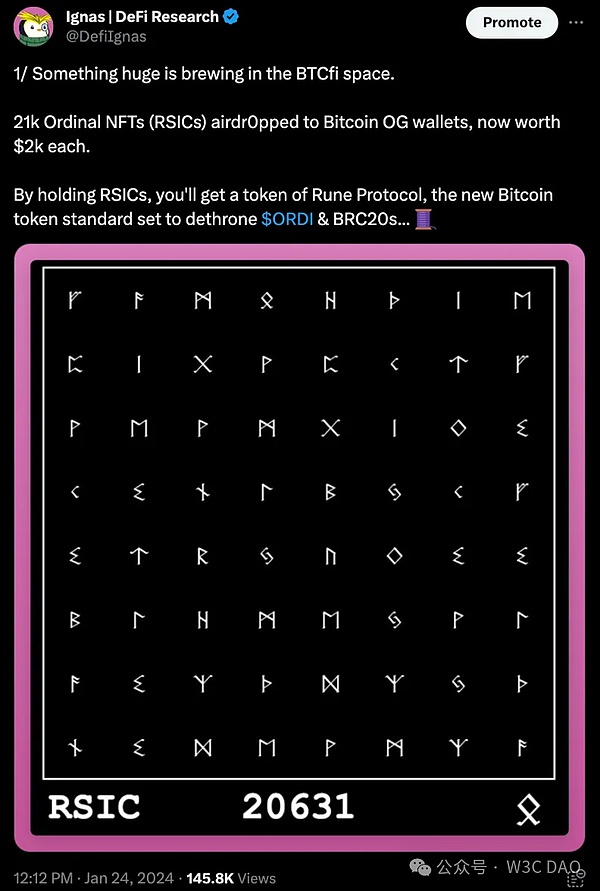
Finally, the complexity of OrdFi/BTCFi provides many opportunities for those willing to learn!
BTCFI started late, and the narrative is dominated by Chinese, but I tell the truth, the Bitcoin DeFi ecosystem is in its early stages , full of loopholes and not easy to use, this is where the opportunity lies.
 JinseFinance
JinseFinance














